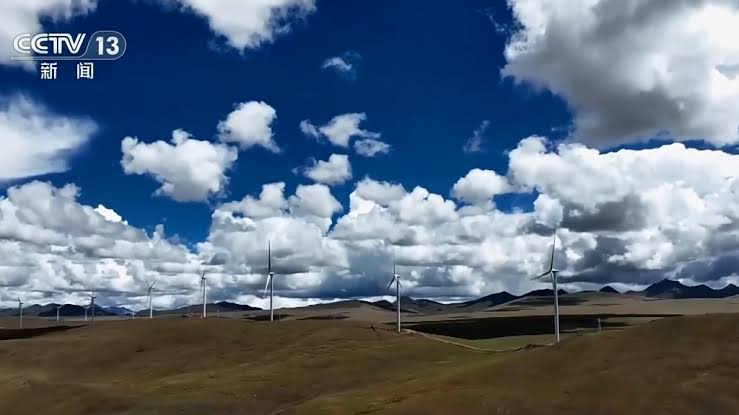A wind farm built at an altitude of 5,000 to 5,200 meters has connected to the grid, Shannan Prefecture, southwest China’s Xizang Autonomous Region, August 3. /CMG
A wind farm built at an altitude of 5,000 to 5,200 meters connected to the grid on Thursday in Shannan Prefecture, southwest China’s Xizang Autonomous Region, making it the highest wind plant in China so far.
In wind projects, a plant built at an altitude of 3,500 to 5,500 meters is considered as ultra-high, according to its developer, the China Three Gorges Corporation (CTG).
With an installed capacity of 72.6 megawatts (MW), the project will generate 200 million kilowatt-hours (kWh) of electricity annually after completion, which can meet the demand of some 140,000 households for a year.
Located in the northern foothills of the Himalayas, the plant is the first wind power project to be connected to the power grid of the Xizang Autonomous Region.
Technical difficulties
The power available in the wind is directly proportional to air density. As air density decreases on the plateau, the available power also decreases, Wang Liang, who is in charge of the project at CTG, told China Media Group (CMG).
Wang said that they choose to use turbines with a single-unit capacity of over three MW, of which the largest capacity reaches 3.6 MW, to increase wind farm energy output.
The 3.6 MW turbine has a rotor diameter of 160 meters, about 20 meters longer compared with those used in other regions, and the swept area increased by nearly 30 percent, he added.
The wind turbines can adapt to high altitude, ultraviolet, lightning and low temperature, so they could be operated stably for a long time under harsh natural environments, according to Wang.
Ecological protection
Since the ecological environment on the plateau area is relatively fragile, Wang said that they have taken environmental protection into consideration, striving to minimize the impact from the beginning of the design to road selection during construction, and topsoil protection and restoration after construction.
He said that they had planned to build 22 turbines, but only built 15 to use the land intensively.
The power-transmission collection line, which is connected to each wind turbine and the incoming switchgear at the low-voltage side of the booster station, has been designed to bypass grassland to better protect pastures.



